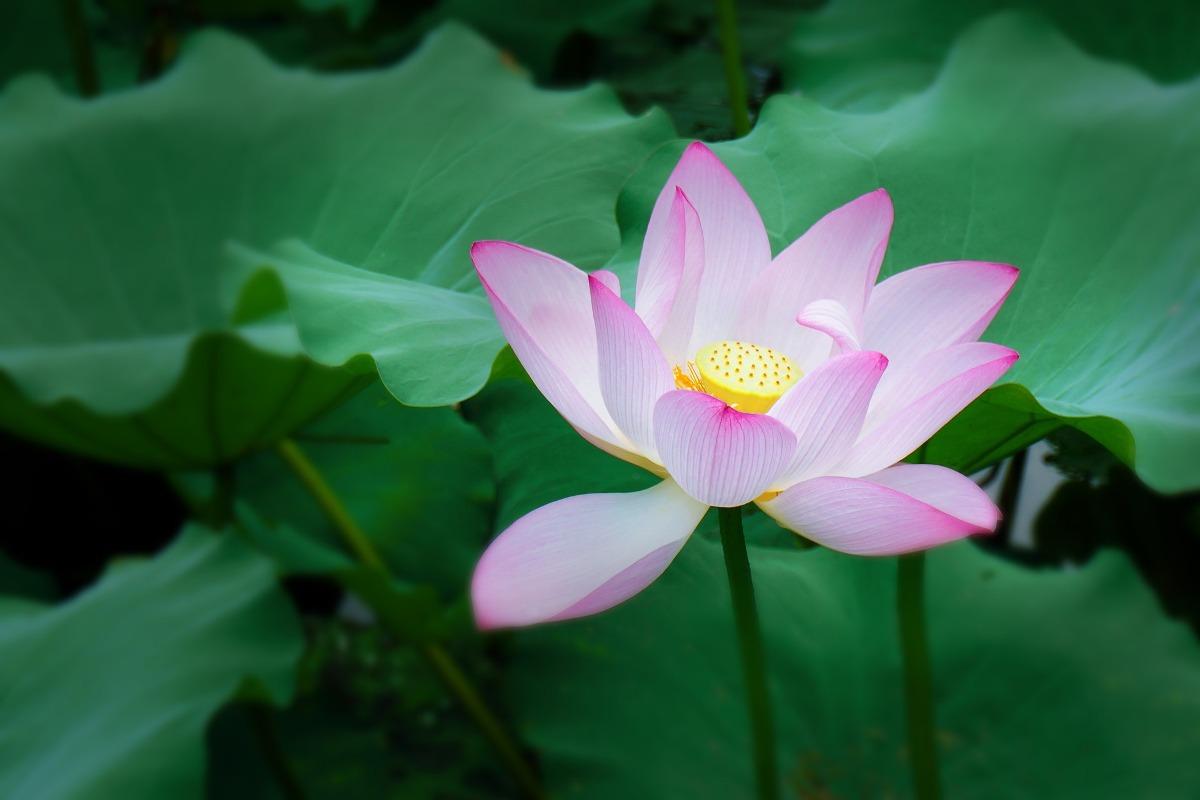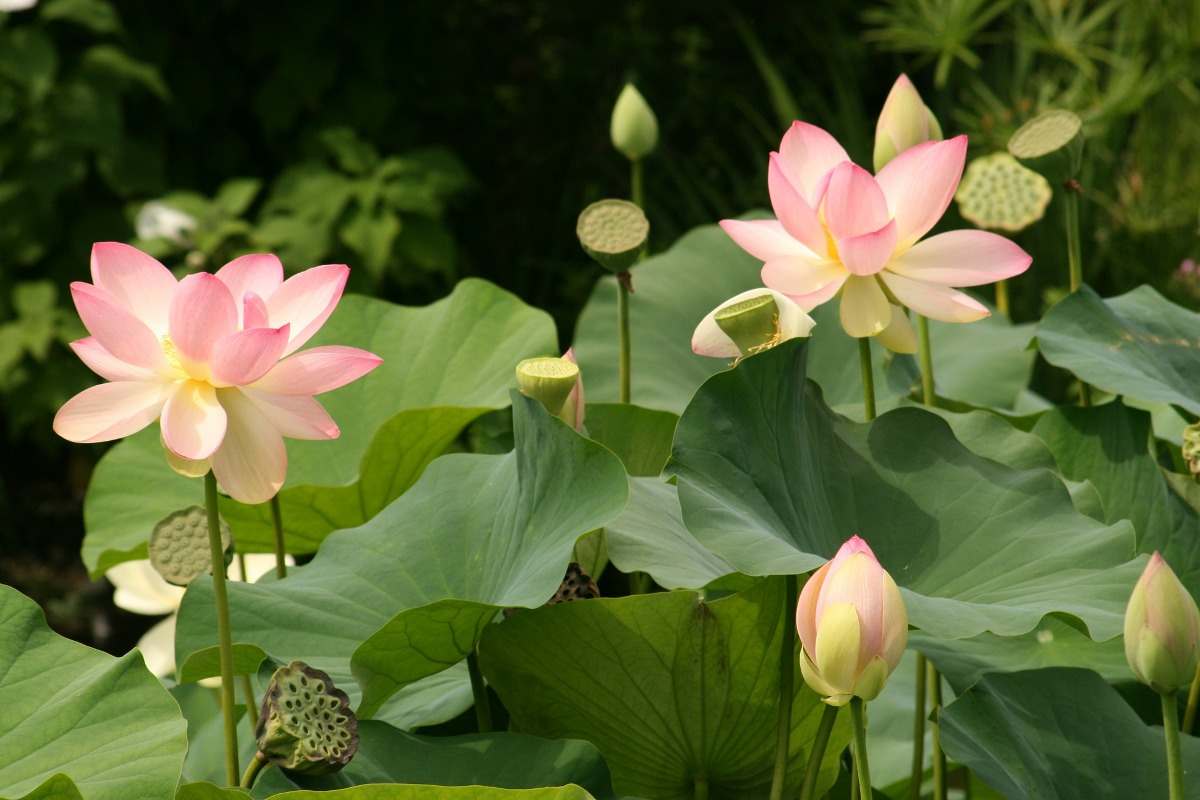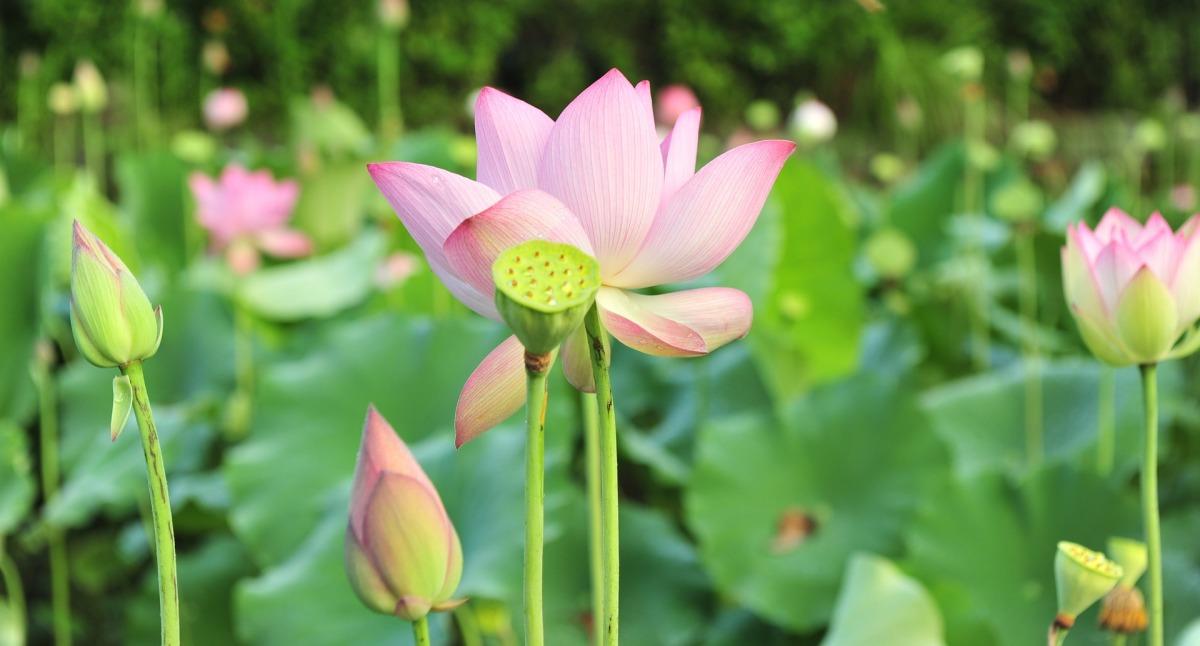Introduction to growing Lotus indoors
Lotus flowers are unique and beautiful flowers. The flowers have a strong will to survive and an incredible daily life cycle. Lotus plant is an aquatic flowering plant in the family of Nelumbonaceae. These beautiful flowering plants are native to Asia, Australia, and Queensland. Lotus is the national flower of India and plants can be easily grown at home indoors. Lotus flowers have different colors include white, red, pink, yellow, lavender, and blue. In this article we also discuss below topics;
- Growing Lotus flowers in containers
- Lotus plant care
- Growing Lotus from tubers
- Lotus growing conditions
- How to propagate Lotus plant
- Lotus growing from seed
- Tips for Growing Lotus in pots
A step by step guide to growing Lotus flowers indoors
Soil and sun requirements for growing Lotus indoors
Lotus plants require at least 6 hours of sun per day to bloom properly and thrive. For soil, you can buy soil made particularly for pond plants, or use heavy topsoil or clay. Do not use garden soil or anything with peat moss or too much organic material because this material will float in the water and soil too high in organic matter will tend to make newly planted seeds or tubers rot. You can however use a small amount of compost in the soil. Try a mix of about 80% clay or topsoil with 20% composted soil. Blend well before adding water.
Container for growing Lotus indoors
First, fill a non-draining, plastic container with a 2-inch-deep layer of clay soil. The container must be 12 inches in diameter and 8 to 10 inches deep. Pot standard and dwarf Lotus in approximately 16 inches wide containers for the first year. The standard size Lotus must be repotted into larger containers after the first year. Be sure the container is deep enough to hold 2-3 inches of water.
Place the pot containing the new transplant in a container that holds 2 inches of water. The water must be warm and kept at a consistent two-inch depth. Then, place the container in a sunny location where the plant will receive at least 8 hours a day of sunlight.
Important gardening tips for growing Lotus indoors

- Lotus need 6 hours sun a day
- Keep Lotus away from flowing water
- Don’t allow your pot to freeze solid in winter
- Don’t submerge the growing leaves
- Re-pot your Lotus in a larger container
- Protect your young Lotus from birds and crustaceans.
- Fertilize in summer
How to plant Lotus tubers
The bottom part of a live Lotus plant including the roots is known as a tuber. When you purchase a live Lotus plant online or from a nursery, you will get a tuber or tubers.
The tubers will look somewhat wilted and half-dead but this is common and it is easy to bring them to life. Be sure to plant them as soon as they arrive or you bring them home from a local nursery.
Here, we discuss the process of growing Lotus from tubers;
Step 1) Select an appropriate container and provide adequate environmental conditions to successfully grow the Lotus plant indoors.
Step 2) Soak a Lotus tuber in a plastic container of warm water until it begins producing sprouts. And this may take up to two weeks.
Step 3) Fill a plastic non-draining planter with about 3 inches of clay soil. The diameter of the pot must be 18 inches and the depth should be at least 6 inches.
Steps 4) Very gently place the Lotus tuber into the pot and use caution in regards to the sprouts growing from the tuber. They can easily be damaged.
Step 5) Gradually add soil over the tuber so that there is a depth of about 1 inch of soil above the top of the plant.
Step 6) Apply a thin layer of pea gravel on top of the soil and then fill the pot with warm water. The gravel will keep the Lotus tuber from floating out of the soil.
Step 7) Place the pot in a sunny window sill where the plant will receive a full day of sunlight. The recommended amount of sunlight is 6 to 8 hours per day.
Step 8) Keep the temperature warm to induce blooming and the air should be above 26°C.
Step 9) Check the water level of the Lotus plant every day. All parts of the Lotus plant, except for the growing tip, should be exposed to water constantly. Add a fertilizer to the Lotus container every 2 weeks.
Planting medium for growing Lotus indoors
Use loam soil, well-composted manure can be used with topsoil, but you need to limit the initial nutrition or you will burn the plant.
- Add a few inches of this mixture to your container.
- Dig a trench and put the Lotus tuber in the trench, being careful not to break the growth tips, while keeping the growth tips exposed.
- You can use a small stone on top of the tuber to keep it from floating.
- Add the desired amount of water above the soil and place the Lotus container in full sun.
- In a couple of days, leaves will appear on the surface of the water. In a week you must have aerial leaves growing out of the water. Once you have aerial leaves, you can begin to fertilize your Lotus plant.
Propagate Lotus from seed
First, collect the healthy seed from dry Lotus seed. Do not get fresh Lotus seed and break through the hard outer seed coat that seals the seed from the elements. Use a file to scrape through the seed coat just slightly, until the white of the Lotus seed is visible. Soak the Lotus seed in distilled water for a day. After a day or so, the seed coat becomes very soft. Once the Lotus seed coat is softened, carefully remove it to lay each seed on clay soil for the water plant. Keep the seed in strong light or half-day of sunlight. Check the water for fouling, and if needed, change it. The first leaves should be seen in 2 to 4 weeks.
Lotus seeds are grown in water
- Place Lotus seeds in a warm glass of water. (Throw them away if they do not float, as they are likely not fertile.)
- Change the water every day and once Lotus roots emerge, put them in 4-inch pots with loam (one seed per pot).
- Cover the plant root with soil or gravel. If leaves have already started to grow before potting, make sure you cover the root.
- Switch Lotus plant to larger containers that don’t have any drainage holes.
- Fertilize sparingly for the first year and they will likely not bloom in the first year, so don’t worry if you do not see them turn up.
- They can winter over in a pond if the depth is below the freeze line. Or, you can lift the tubers and store them in a frost-free location.
Process of growing Lotus indoors from Seed
Scrape the Lotus seed with a file and using a standard metal file, scrape the hard seed casing to reveal the cream-colored core. Do not file any of the core away or else Lotus will not grow. Then, filing away the outer casing allows water to reach the core. If you don’t have a metal file handy, you can use any sharp knife or even rub the Lotus seed against concrete. Just be careful not to scrape away too much of the Lotus seed.
In case if you miss this: Terrace Hydroponic Gardening.

Place your Lotus seeds in warm water. Use a glass or transparent plastic container so that you can see when the Lotus seeds start to sprout. Fill the container with dechlorinated water between 24 and 27°C. After a day of soaking, the Lotus seeds will sink to the bottom and swell to nearly twice their original size. Seeds that float are almost always infertile and remove them or they will cloud up the water. Lotus seeds take 2 to 3 days to sprout. Germinated Lotus seeds must be planted in a pot having at least a 20-inch diameter and 15-inch depth. Sprouted Lotus should be planted after 15 to 20 days. Soil for Lotus must be sticky and having no other foreign materials.
Change the water daily, even after the Lotus seeds have started to sprout. When you remove the seedlings to change the water, treat the sprouts with care and they are very delicate. Fill a 3 to 5-gallon container with 6 in (15 cm) of deep soil. This size provides enough room for a young Lotus to grow. A black plastic bucket will retain heat to better warm the Lotus seedlings. Ideally, your soil must be 2 parts clay and 1 part river sand. If you use commercial potting soil to topsoil for houseplants, it will float to the surface once you submerge the tub in water.
Make sure the growing container you choose does not have any drainage holes. The plant may gravitate toward the drainage hole and begin growing outside of it, causing the Lotus plant to underperform. Remove Lotus seedlings from water once they are 6 inches long. Your seeds must start to sprout after 4 or 5 days of soaking. Though, if you transfer them to the potting container too early, they will likely fail. If you wait too long, seedlings will start to grow leaves. You can still plant them take care to keep the leaves free of the soil.
Press the sprouted Lotus seeds into the soil about 4 inches apart. You don’t have to bury the seeds in the soil. Set them just on top, and then brush a light layer of soil over them to secure them. They will take root on their own. It can be a good idea to wrap a small amount of modeling clay around the bottom of each Lotus seed to anchor it with a little weight. When you lower container into the pond, an unanchored seed may find its way out of the soil and float up to the surface of the water. Lower the pot into your pond and Lotus are aquatic plants, so the soil always has at least 2 to 4 inches of water above it. If you have taller plants, the water can be up to 18 inches deep. Dwarf Lotus needs water between 2 and 12 inches deep.
The water should be at least 21°C. If you live in an area with a cooler climate, shallower water will provide extra warmth for your Lotus. Lotus has grown from seed rarely bloom in their first year and you should also keep fertilizer to a minimum during this first year. Allow Lotus to acclimate to its environment.
Watering Lotus plants
Place the pot in a shallow water maximum of 20 to 30 cms deep. Once the temperature level reaches 26°C, the plants will begin to bloom. The first spring leaves appear as it floats on the water surface. Also, the plant receives a minimum of 6 hours of sunlight a day. Dwarf Lotus varieties can grow up to 1 foot tall with leaves 2 to 3 inches in diameter. Some other Lotus varieties can reach a height of 6-8 feet tall with leaves 18 to 36 inches in diameter.
Pruning and repotting Lotus plants
Prune your Lotus flowers if necessary. Cut the stems and yellow color leaves above the surface of water prone to diseases. It helps the plant to stay healthy and prevents diseases. When you re-pot the Lotus plants to bigger pots it should hold 2 to 3 inches of water. Lotus can be re-potted in the early spring season when the growth begins and you can pick the tubers from the original pot when you observe the green shoots.
Prune dying blossoms and yellow or damaged Lotus leaves. If your Lotus starts to take over the pond, you can also cut away new growth, but keep in mind it will grow again until the Lotus is repotted in spring. And, never cut flower or leaf stems below water level. Roots and tubers use stems for oxygen.
Watch out for Lotus plant pests
While pests vary depending on geographic location, aphids and caterpillars may be attracted to Lotus leaves. Applying a small number of powdered pesticides directly to the leaves will protect the Lotus plant from these pests. Liquid pesticides, even organic ones, have oils and detergents that can damage your Lotus plants.
Commonly asked questions about growing Lotus indoors
You may also check this: Organic Terrace Gardening.

Is the Lotus plant edible?
Lotus plant is an herbaceous perennial aquatic flowering plant in the family of Nelumbonaceae. Not only the seeds but all the parts of the plant like leaves, flower buds, stalks, and roots are edible. These are used for decorative purposes and in lotions, sweet-scented perfumes.
How much time does it take for a Lotus to bloom from seed?
Lotus seeds take 2-3 days to sprout. Germinated Lotus seeds should be planted in a pot having at least a 20-inch diameter and 15-inch depth. Sprouted Lotus should be planted after 15 to 20 days.
Which soil is best for growing Lotus?
Lotus can quickly rot in organically rich soil so it is best to use clay soil or potting mix made particularly for pond plants. Add soil until it is about 3 inches deep in the Lotus container. Gently pick up the tuber, as damaging the new shoots can quickly kill a Lotus.
Why the leaves of the Lotus plant turn yellow?
Lotus stems have hollow, straw-like spaces in them, and by cutting those stems water can be transferred into the tuber, drowns, and kills the entire Lotus plant. During frost condition i.e. in the fall season, due to insufficient amounts of nutrients supplied to the plants (liquid fertilizers) then the Lotus plant leaves turn yellow.
In case if you are interested in How to Make Money from Dried Flower Business.